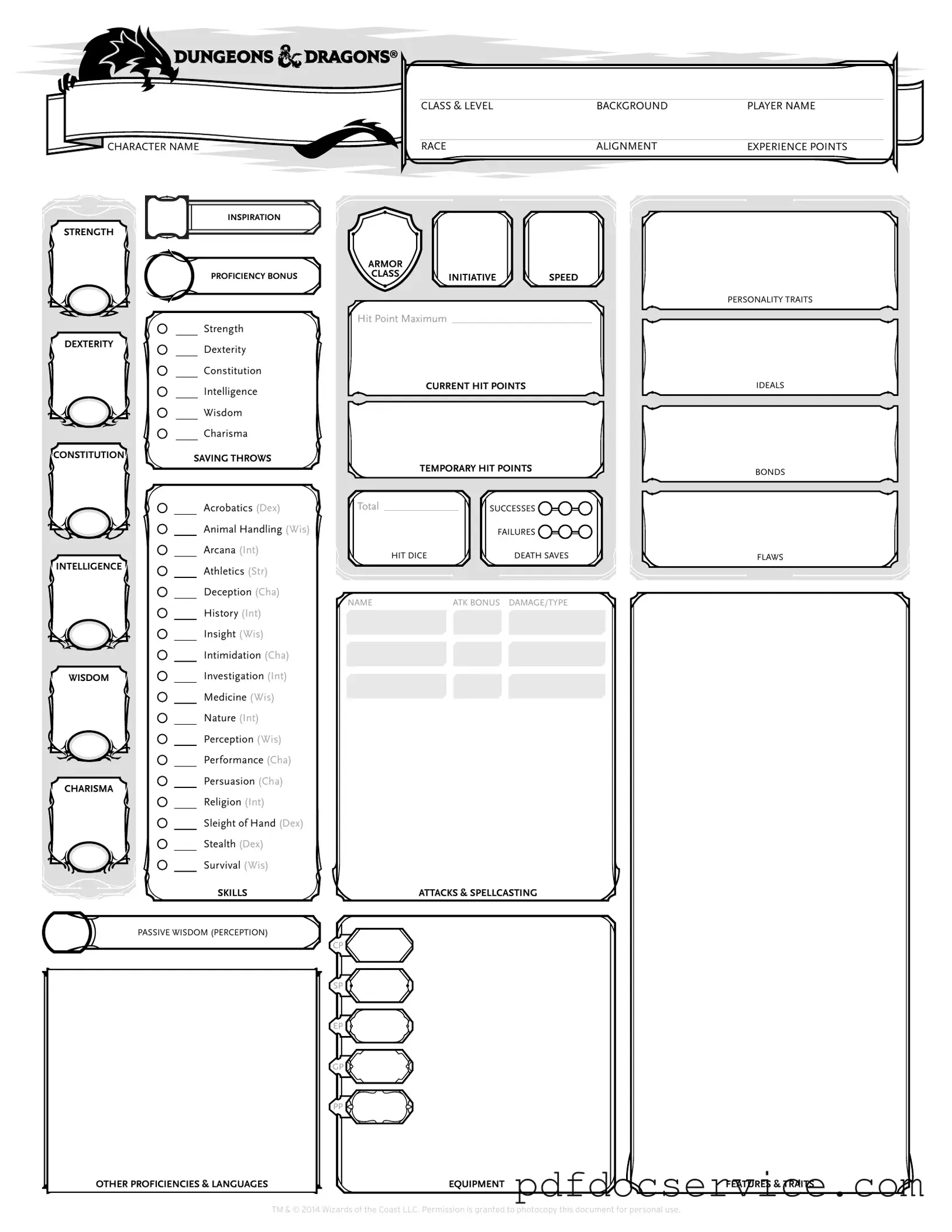What is a D&D Character Sheet?
A D&D Character Sheet is a document that helps players keep track of their character's abilities, skills, equipment, and background in the game. It serves as a summary of your character’s attributes, such as strength, intelligence, and charisma, as well as important details like hit points and class features. This sheet is essential for gameplay, as it provides all the information needed to make decisions during a session.
How do I fill out a D&D Character Sheet?
Filling out a D&D Character Sheet can be a fun and creative process. Here’s a simple step-by-step guide:
-
Choose a race and class for your character. Each race and class has unique traits and abilities.
-
Determine your ability scores, which represent your character’s strengths and weaknesses.
-
Fill in your character’s background and personality traits. This helps to develop a rich story for your character.
-
List your character’s skills, proficiencies, and equipment. This information will be crucial during gameplay.
-
Keep track of hit points and any spells or special abilities your character may have.
Remember, your character sheet is a living document. As your character grows and develops, update it regularly to reflect any changes.
Can I customize my D&D Character Sheet?
Absolutely! While there are standard character sheets available, many players enjoy customizing theirs to fit their style. You can add artwork, notes, or even change the layout to better suit your needs. Some players prefer digital versions that allow for easy editing, while others enjoy the tactile feel of a printed sheet. Whatever you choose, make sure it works for you and enhances your gaming experience.
What do I do if I make a mistake on my Character Sheet?
Mistakes happen, and that’s perfectly okay! If you find an error on your Character Sheet, simply correct it. If it’s a pencil sheet, you can erase it. For ink or digital sheets, you may want to cross out the mistake and write the correct information nearby. The important thing is to ensure that your sheet accurately reflects your character. Don’t hesitate to ask your Dungeon Master for help if you’re unsure about a specific detail.
Where can I find a D&D Character Sheet?
You can find D&D Character Sheets in various places:
-
The official Dungeons & Dragons website offers free printable sheets.
-
Local game stores often have physical copies available.
-
Online platforms provide digital versions that you can fill out and save.
-
Many fan sites and forums share customizable character sheets created by other players.
Explore these options and choose the one that best fits your gaming style!
